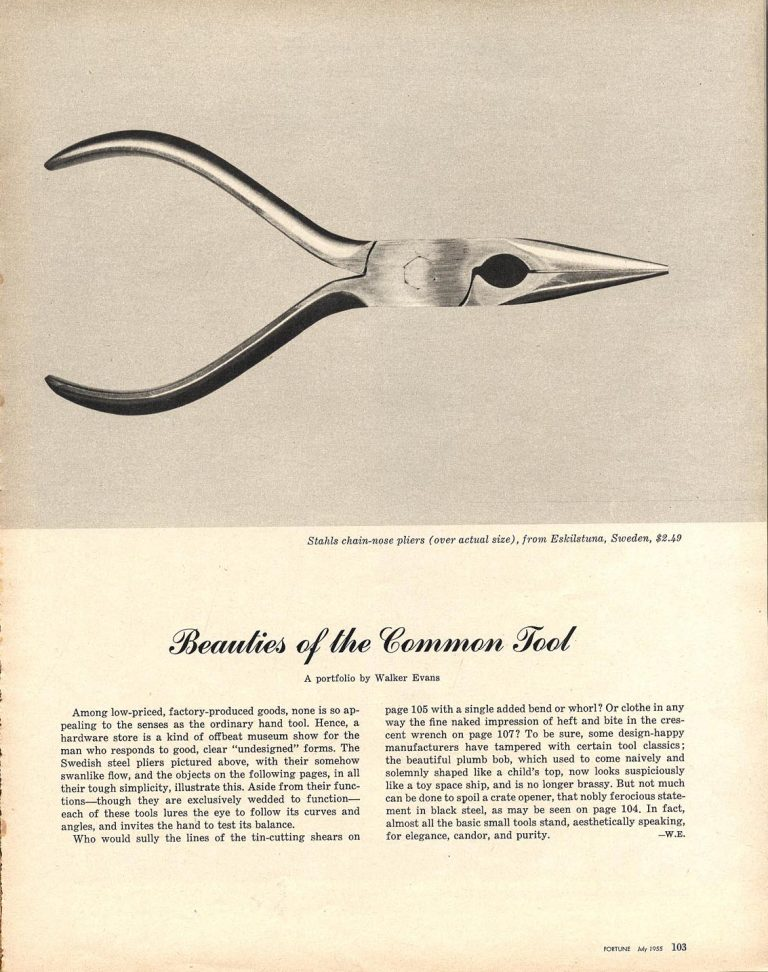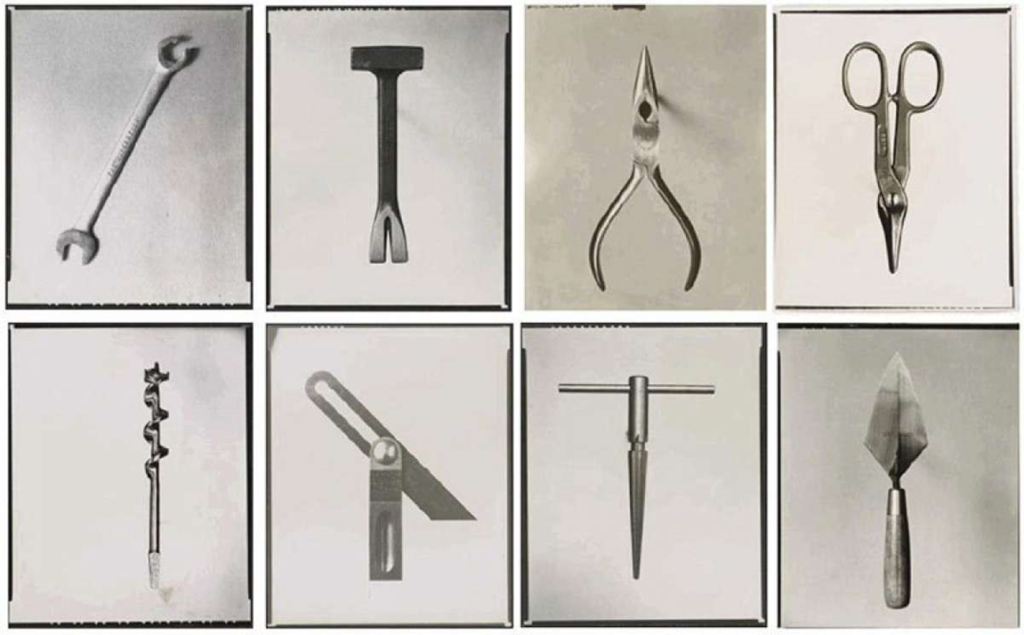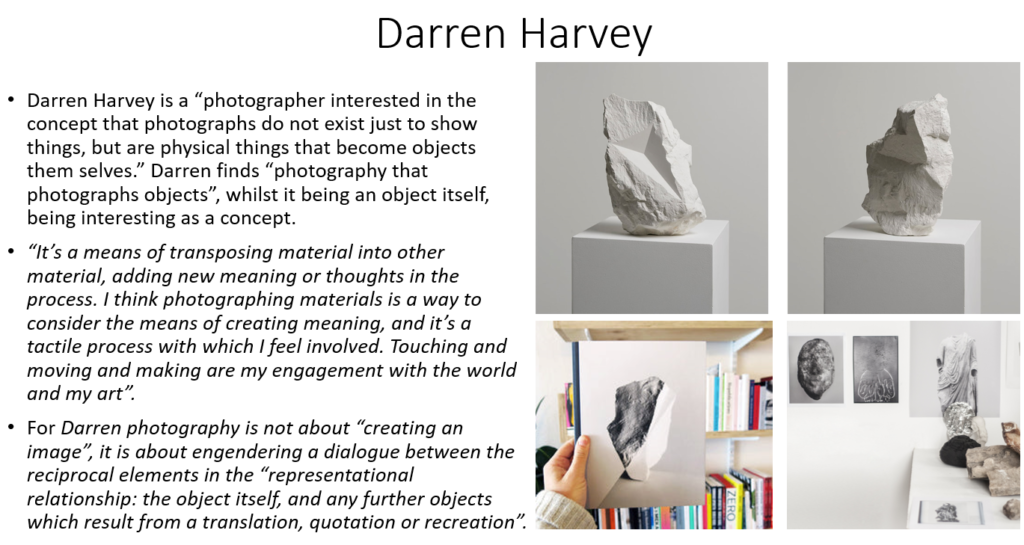
Born in 1903 in St Louis, Missouri, Walker “dabbled with painting as a child, collected picture postcards, and made snapshots of his family and friends with a small Kodak camera. He continued to take photography as a hobby when his family moved to Chicago, and subsequently Ohio. After a year at “Williams College, he quit school and moved to New York City, finding work in bookstores and at the New York Public Library, where he could freely indulge his passion”. Between 1943 and 1965, “he worked as a staff photographer for Time and Fortune”. Soon after retiring from professional photography in 1965, he taught graphic arts at Yale. “Walker Evans’s photographs were as prototypes both for the American documentary movement of the 1930s and for street photographers of the 1940s and 50s”.

In the “Beauties of the common tool” Walker Evans works with a contrast of silver hard materials describing it in his accompanying text as “Among low-priced, factory-produced goods, none is so appealing to the senses as the ordinary hand tool. Hence, a hardware store is a kind of offbeat museum show for the man who responds to good, clear ‘undesigned’ forms”. The “images of a reamer, an awl, a bill hook, an auger, various pliers, and a couple of variations on a T-square and some wrenches.” are photographed showing the simplicity of dusky and darkened tools when photographed alone.



I like how the photographs are presented and how the idea of Formalism comes across because both aspects of “form and style” play throughout the photograph such as the texture on the rocks contrasting to the shadow and dark features exposed to the lens behind the object. The “visual aspects” of Darren’s images are the different shaped creases and crevasses on the rocks.

Good effort here.
When talking about Walker Evans’ photos, try to expand on how he has framed the tools and why? How has he used negative space? What colours has he used and why? What is Walker Evans trying to achieve with his photos?
Then when looking at Darren Harvey-Regan, try to focus on the work he developed using Walker Evans’ photos (he took Walker Evans’ photos and created his own montages from them).